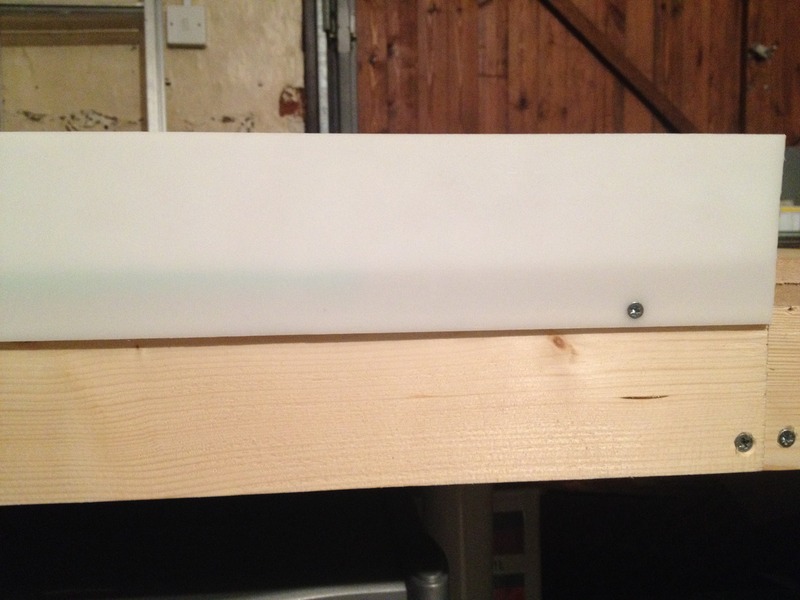Track Layout
Starting to position the track and basic layout elements.
Design Choice
Many of the J-Trak designs allow the track to be moved on the boards while still keeping the exits in line with the edges, however some cannot as is the case with my 90 degree module. Because of this fact, this section will determine the gap between the side of the track and the edge of the board, and therefore was the first to be built.
Track Placement

The design was positioned using two Radius 2 180 degree templates and the pieces that are at the exits were temporarily tacked in position. It is useful at this point to mention expansion gaps. When I clipped the track pieces together and the tabs clicked as they locked in position, I then pulled the track pieces apart slightly to create a 1-2mm gap at the joint and repeated this throughout the module.
My build took place in winter so these expansion gaps will reduce the likelyhood of the track buckling in the heat of summer. Had my build taken place in hot weather I would have made sure the track pieces were pushed together tightly with no gap so that any shrinkage in the cold weather didn't affect the joints too much.
Clean & Crimp Track
New track pieces have some sort of grease on the rails to prevent corrosion, my used pieces had carbon deposits from many previous digital races so both were cleaned carefully with Solvol Autosol which gives a good shine without damaging the electroplated finish.
The joints will probably be soldered in the end but for now I crimped all the track rails (this is best done upside down joined to another piece) to ensure a good electrical connection.
Retaining Walls
To prevent cars falling onto the concrete floor, I attached a retaining wall to most of the module edges. The material chosen was a 3mm polypropylene sheet material cut to strips of just under 90mm and screwed to the batten frame. This size gives a visible wall of 50mm but will not interfere with the process of stacking the modules for storage or transportation. Other materials such as hardboard or perspex would also work fine but polypropylene does not need painting and does not crack.
Retaining Walls


Load Pads & Gravel Traps
Because I will be stacking my modules directly on top of each other I needed to prevent damage to the track and in fill material so MDF sections were positioned in each of the corners. Where there was going to be a cork mat gravel trap, the load pads were cut to the same shape as the cork.
Gravel Trap

